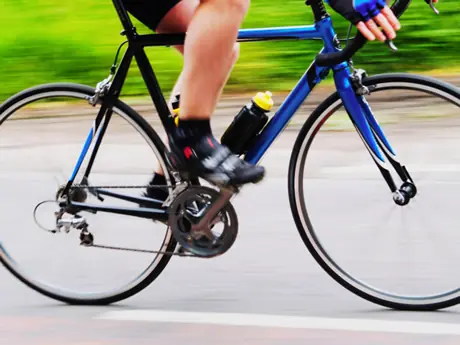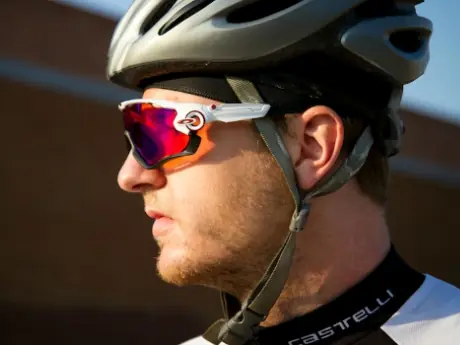Drills and technical exercises to help you improve this important motion of the foot are great to do on rollers or trainers; however, the single most important pedaling tip is to maintain constant concentration on preserving even pressure throughout the stroke when pedaling normally.
In race conditions, the amount of force generated by the downstroke is more than 96 percent of total power. This leaves roughly 4 percent for the rest of the pedaling stroke. Yet many athletes consciously try to pull up on the pedal, which contributes very little to total power output.
By pedaling a bike in a feather 360 degrees with a rounded or elliptical motion, the cyclist should feel more energy efficient.
More: How to Get Comfortable With Clipless Pedals
Phase 2: Backstroke
The backstroke is the sector immediately following the downstroke in which the transition from the downstroke ends on one side and begins on the other.
The backstroke overlaps with the downstroke and upstroke and is made by pulling backward and upward from approximately 120 to 220 degrees (4 to 8 o'clock).
While in this sector, the opposite foot and pedal are entering the downstroke. The backstroke is a transitional phase and should be emphasized only in specific technique workouts.
More: Strokes of Genius: Refine Your Pedaling
Phase 3: Upstroke
For upstroke drills, the emphasis is on pulling upward from 270 to 360 degrees. Do not pull up when riding normally, as there is little if any power benefits (probably less than 5 percent). You may, however, want to work this aspect when out of the saddle on hills or moderately rolling terrain.
Phase 4: Overstroke
The overstroke is the last transitional movement and precedes the downstroke by pressing forward over the top from about 320 to 20 degrees.
As with any of these sectors, drill exercises are an important part of training. I recommend training sectors regularly as part of the warm-up, a regular training workout, during breaks between intervals, when riding with a slower friend, or during the cool-down.
More: Use Indoor Cycling Drills to Get Your Spin Down
There are countless ways to design these workouts, for example:
- 8 x 30 seconds at each of the four sectors
- 4 x 250 meters at each sector
- Four sets of 2 x 100 revolutions at each sector
Training these sectors independently improves the transition from one phase to the next and thereby increases pedaling efficiency of the overall cycling pedal stroke.
Remember, however, that the most important tip for pedaling a bike is to pedal with light 360 pressure—evenly distributed around the stroke—and work on this every time you're riding. It takes concentration, but the benefits are improved efficiency and better transfer of power to the pedals.
More: Variable Gearing With Dave Scott
 Pedal your way to your next triathlon.
Pedal your way to your next triathlon.
- 2
- of
- 2
About the Author

www.evanscoaching.com | marc@evansoaching.com | YouTube | Facebook








Discuss This Article